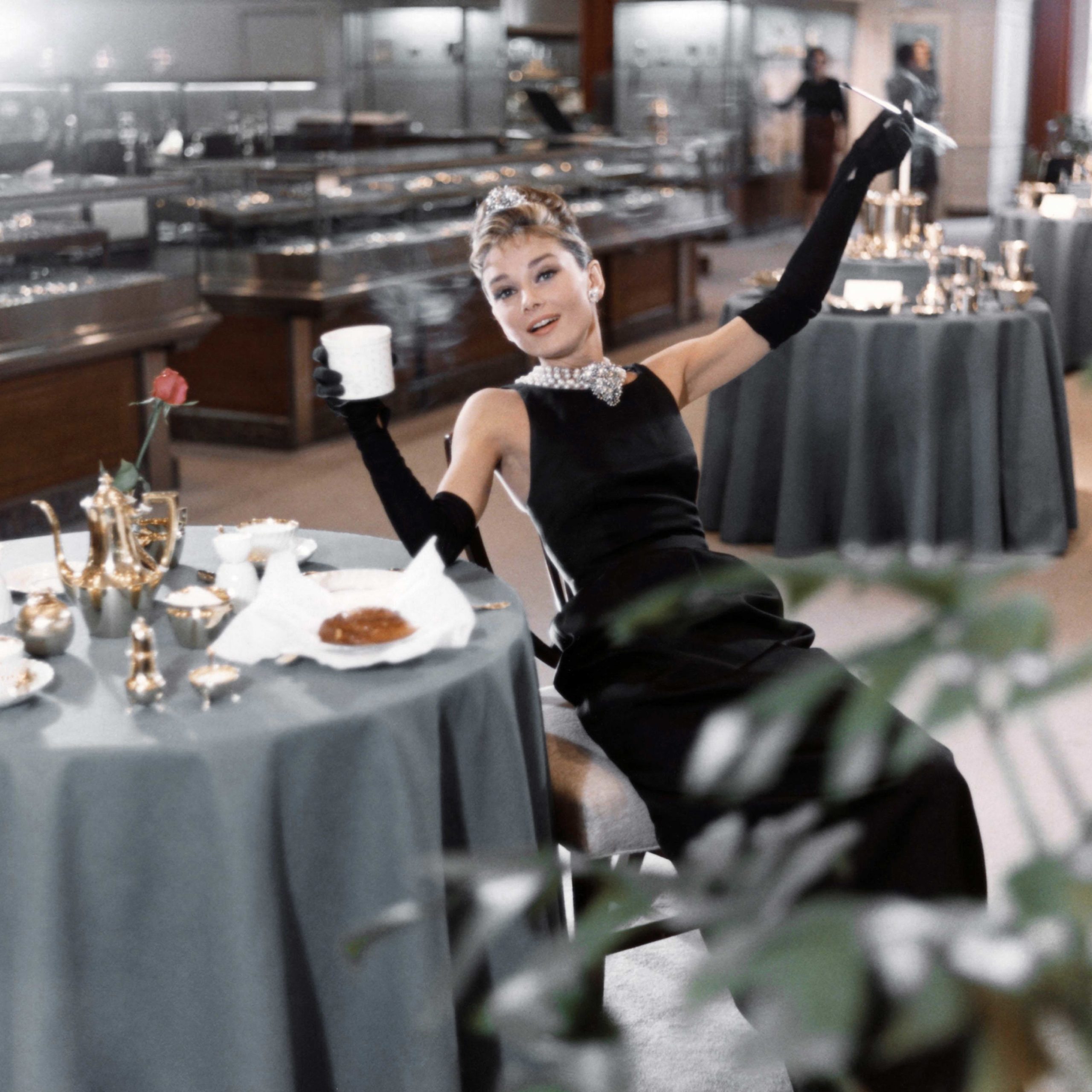“People always associate me with the time when movies were pleasurable. When women wore beautiful dresses in movies with beautiful music.”
She was one of those women who wore high-fashion designs, with a permanent smile of joy on her lips, while living a romance with an attractive gentleman in some chic European capital. Sophisticated comedy and Audrey, its queen. We’re in “Breakfast at Tiffany’s” (1961, Blake Edwards), Audrey is Holly, and George Peppard plays Paul. Holly asks Paul: “Don’t you love me?”, Paul is on guard: “Love whom?”, Holly: “Tiffany’s.”
Audrey had the misfortune of being born with the name Edda van Heemstra Hepburn-Ruston in Brussels, Belgium in 1929. World War II surprised her and her mother in a Holland that was soon occupied by the Nazis. There she would remain until the end of the war. As the war progressed, Audrey took ballet lessons and, it is rumored, participated in resistance activities with her mother. When the German army was defeated, she traveled to London, where she filled out her resume with jobs as a model for fashion photographers. In 1948, she made her film debut with minor roles while continuing her training as an actress with classes.
With the help of novelist Colette, she made her Broadway debut with “Gigi,” and in 1953, director William Wyler called her to star in “Roman Holiday” alongside Gregory Peck, a role that Jean Simmons had previously turned down. The film quickly became a classic, and Audrey won her first Oscar.
In these early days of professional fame, the actress began to experience the setbacks of success and had to endure, for example, the studios’ pressure to change her surname Hepburn to avoid confusion with Katharine Hepburn.

In 1954, she married actor Mel Ferrer and won a Tony award for her work in the Broadway play “Ondine.” That same year, “Sabrina” arrived, where Audrey played her most prototypical role, in a film that, under the direction of Billy Wilder, overshadowed a William Holden (with whom it is said she had a romance) and a Humphrey Bogart. In a meteoric career that seemed to know no limits, the Academy nominated the actress again, this time without a final award.
The epic “War and Peace” of 1956 allowed her to be in front of the cameras with her husband, and in 1957, she repeated the same mechanics as in “Sabrina” with Billy Wilder (young, innocent, and cheerful girl involved with an older wealthy man) with the unforgettable and until recently unreleased in Spain, “Love in the Afternoon,” where she seduces an aging and slightly rough Gary Cooper while a surreal string quartet plays a romantic melody. With “The Nun’s Story,” by Fred Zinneman, Audrey achieved another Oscar nomination and won the award at the San Sebastian Film Festival in 1959. “Breakfast at Tiffany’s” is another landmark film for Audrey that continues to excite new generations. “The Children’s Hour,” the cocktail and Dry Martini comedy with a bitter background, the “Cat” and George Peppard with Audrey in the rain. And “Moon River”…
In 1963, Cary Grant insisted that director Stanley Donen cast Audrey as his co-star in “Charade.” During a dinner with Donen, Cary Grant, and Audrey to discuss the film’s preparation, Audrey couldn’t hide her nerves. She never imagined she would meet her idol Cary Grant. When he asked her to pass the wine, she accidentally spilled it on his impeccable suit. She didn’t know where to look, but Cary laughed it off happily.
After finishing “Charade,” she was offered the role of Eliza Doolittle in the musical “My Fair Lady” in 1964, directed by George Cukor. The play had previously been a success on Broadway with Julie Andrews as the lead. Hepburn initially rejected the role, stating that Julie should play Eliza. Eventually, she accepted the role, which brought her both satisfaction and disappointment. On one of the first days of filming, she was informed that her voice would not be used in the film’s songs. Jack Warner had apparently known this before she signed the contract but had kept it from her. Blinded by rage, she left the set but returned the next day to apologize to everyone.

In 1969, she married Italian psychiatrist Andrea Dotti and moved to Rome. They divorced in 1976, and after nine long years of absence, she returned to film with “Robin and Marian” (Richard Lester), co-starring with Sean Connery. Her work became increasingly spaced out until 1989 when Steven Spielberg was considering who should play the angel in “Always,” his next melancholic film. Spielberg simply said two words: “Audrey Hepburn,” and no one argued. This would be her final role in film.
After “Always,” Audrey devoted herself more than ever to the humanitarian activities that concerned her so much. In 1988, she was appointed as UNICEF’s Special Ambassador, traveling on different missions throughout Africa and South America. She returned from a visit to Somalia in 1992 and was diagnosed with colon cancer, which claimed her life the following year. In that season’s Oscar ceremony, she was posthumously awarded a statuette for her humanitarian work.
Billy Wilder always had great respect for Audrey Hepburn and was very aware of the intangible, magical substance that actresses like her were made of. In the 1990s, he said, “We live in an era without stars, especially female stars. Audrey Hepburn was special because she wasn’t ‘pretty.’ She was very beautiful. But when you saw her when she wasn’t acting, she was normal and plain. And she was a very good actress. Her death was a tremendous loss.”



